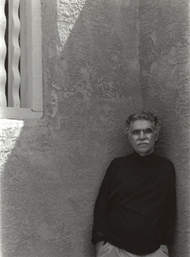Bless Me, Ultima
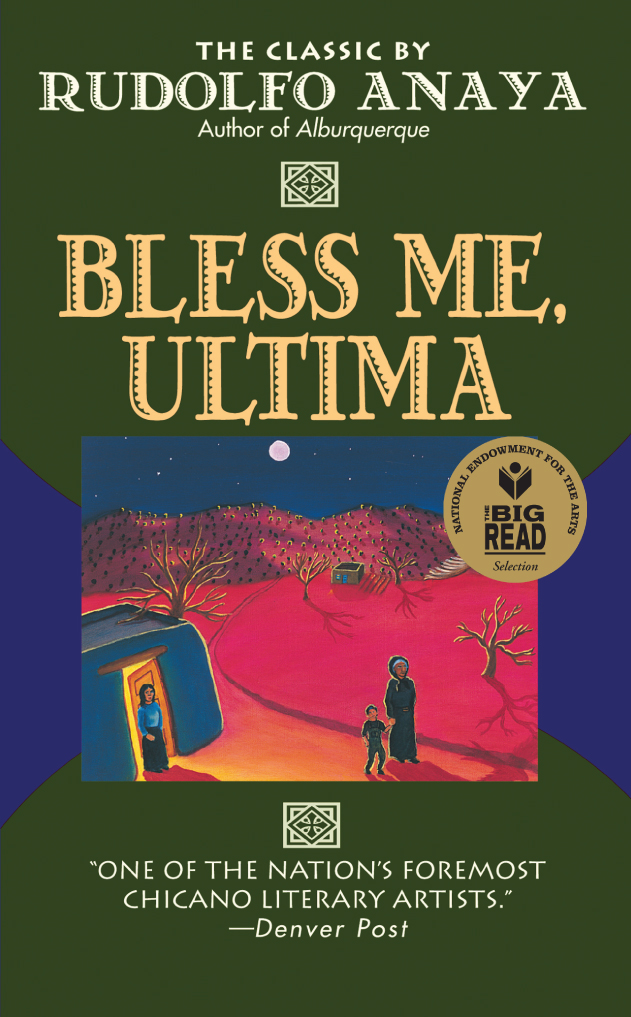
Overview
First published in 1972, this semi-autobiographical, coming-of-age novel is one of the most critically acclaimed Chicano novels of all time. Set in rural New Mexico in the 1940s, the novel tells the story of a boy who learns to navigate the changing American landscape during World War II with the help of a curandera (spiritual healer) who guides him through the cultural, religious, and moral contradictions he faces in his community of farmers, priests, cowboys, and soldiers. Like his protagonist, National Endowment for the Arts creative writing fellow Rudolfo Anaya grew up in a New Mexico community heavily influenced by both Catholicism and spiritual healers, with a vaquero (cowboy) father and three older brothers who went off to war in their youth. Anaya is an “extraordinary storyteller” that has “always written unpretentiously but provocatively about identity. Every work is a fiesta, a ceremony preserving but reshaping old traditions that honor the power within the land and la raza, the people” (Los Angeles Times Book Review). The film version of the novel directed by Carl Franklin was released in 2013 to critical acclaim.
"A novel is not written to explain a culture, it creates its own." —from the introduction to the Reading Group Guide edition of Bless Me, Ultima
Overview
First published in 1972, this semi-autobiographical, coming-of-age novel is one of the most critically acclaimed Chicano novels of all time. Set in rural New Mexico in the 1940s, the novel tells the story of a boy who learns to navigate the changing American landscape during World War II with the help of a curandera (spiritual healer) who guides him through the cultural, religious, and moral contradictions he faces in his community of farmers, priests, cowboys, and soldiers. Like his protagonist, National Endowment for the Arts creative writing fellow Rudolfo Anaya grew up in a New Mexico community heavily influenced by both Catholicism and spiritual healers, with a vaquero (cowboy) father and three older brothers who went off to war in their youth. Anaya is an “extraordinary storyteller” that has “always written unpretentiously but provocatively about identity. Every work is a fiesta, a ceremony preserving but reshaping old traditions that honor the power within the land and la raza, the people” (Los Angeles Times Book Review). The film version of the novel directed by Carl Franklin was released in 2013 to critical acclaim.
This title is no longer available for programming after the 2018-19 grant year.
Introduction to the Book
The summer before Antonio Juan Márez y Luna turns seven years old, an old woman comes to live with his family in Guadalupe, New Mexico. This woman—called La Grande or Ultima—is a curandera, a traditional healer feared by many and mysterious to all. With her knowledge of medicinal plants and adoration for the llano (open plains), she uses her magic to aid the community.
Because she served as his midwife, Ultima has a special connection to Antonio. As she teaches him, their bond deepens. Antonio witnesses several tragic events that profoundly shake his understanding of his history and his future. After the murder of Lupito, a soldier recently returned from World War II, Antonio begins to consider sin, death, and the afterlife in earnest.
Among the many conflicts Antonio seeks to resolve, the tension between his parents ranks foremost. A devout Catholic, María Luna Márez is the daughter of farmers, and she desperately wants Antonio to become a priest. But his father, Gabriel Márez, is a former vaquero, or cowboy, whose wandering spirit has not settled despite marriage and six children. Gabriel's deepest dream has not come true—to move his family to California's vineyard country.
Antonio's dreams often foreshadow the future and feature his three older brothers, just demobilized from World War II. These surreal dreams also reflect his existential questions: Why is there evil in the world? Why does God sometimes seem to punish the good? Where will I go after death? How can I know the truth? Believing that his first Communion will answer these questions, Antonio studies his catechism and proves an able scholar. Through his dreams and his challenges—including a mob beating from his schoolmates, the death of a close friend, and his brothers' waywardness—Ultima and her owl remain a watchful, benevolent presence.
Bless Me, Ultima is a coming-of-age novel about a young boy's loss of innocence and approach to maturity. But it also deals with tradition and education, faith and doubt, and good and evil. And if Antonio doesn't find an absolute truth in his search, he still comes to believe with his father that "sometimes it takes a lifetime to acquire understanding, because in the end understanding simply means having a sympathy for people."
Major Characters in the Book
Antonio Juan Márez y Luna
The novel's narrator is an imaginative boy about to turn seven years old. Torn between the Mexican-Catholic heritage and the daily miracles of the natural world, he struggles to gain maturity and reconcile all the different blessings envisioned for him.
Antonio's Family
Gabriel Márez
Antonio's father is a former vaquero (cowboy) who dreams of moving his family to California.
María Luna Márez
Antonio's mother is a devout Catholic from a family of farmers who wants her youngest son, Antonio, to bring honor to the family by becoming a priest.
León, Eugene, and Andrew
Antonio's older brothers have been fighting in World War II. Their return to New Mexico renews Gabriel's dream of a new life.
Antonio's Circle
Ultima
Also known as La Grande, the elderly curandera (healer) joins the Márez family during her final days. Many in the town believe she is a bruja (witch), but she uses her herbal cures for good.
Samuel and Cico
Although they are only two years older than Antonio, Samuel and Cico serve as wise mentors. Samuel tells Antonio the legend of the Golden Carp the day Antonio finishes first grade; Cico takes Antonio to see the magical fish the next summer.
Horse, Bones, Red, the Vitamin Kid, and Abel
This gang comprises the boys with whom Antonio plays, fights, and ultimately falls out.
Tenorio
The villain of the novel blames Ultima for the deaths of his two young daughters. When he vows revenge and attempts to kill Ultima, Ultima's owl blinds him in one eye.
Narciso
The town drunk and a gifted gardener, he bravely tries to stop Tenorio from murdering Ultima. After Antonio witnesses Tenorio's triumph over Narciso under the juniper tree, Antonio's doubts about God deepen.
How Bless Me, Ultima Came to Be Written
"When I started writing Bless Me, Ultima, I was writing Antonio's story. This boy grows up in a small town, like my hometown, and deals with things that I did—fishing, school, church, and listening to the stories of the people from the community. One night when I was writing late at night, Ultima appeared to me—let me put it that way. She stood at the door and she asked me what I was doing, and I said I was writing a story. And she said that she had to be in the story. And when I asked her name she said, 'Ultima.' And that's when the novel came alive."
—Excerpted from Rudolfo Anaya's interview with Dan Stone
Miracles and Magic in Bless Me, Ultima
No one in Bless Me, Ultima doubts the existence of mystery and magic. Miracles, signs, and symbols form a rich part of the New Mexican Catholic culture of Anaya's world, a unique setting where, for four-hundred years, Catholicism has thrived alongside Indian Pueblo religions. Much of Antonio's struggle stems from his desire to understand the "correct" source of these miracles: the Catholic church, or the curandera.
Catholicism offers Antonio a prescribed way of seeing the world. He diligently learns his Catechism, believing that revelation will come once the body of Christ enters him during his first Communion (Eucharist). He loves the Virgin of Guadalupe—the patron saint of his small New Mexican town—because she represents forgiveness. A devout Catholic woman, Antonio's mother María pushes him toward the priesthood.
Ultima never contradicts María, but her ways as a traditional healer are different. As Antonio says, "Ultima was a curandera, a woman who knew the herbs and remedies of the ancients, a miracle-worker who could heal the sick.... And because a curandera had this power she was misunderstood and often suspected of practicing witchcraft herself."
These two perspectives—the church and the curandera—are often in conflict in the novel. Catholicism praises the Virgin Mary, yet she is mocked in Antonio's school Christmas play. The town denigrates Ultima as a bruja (witch), but when the priest cannot heal, some townspeople beg her to use her power.
Ultima tells Antonio not what to believe, but how to make choices. Like his father, she wants Antonio to think for himself. By the end of the novel, as Rudolfo Anaya has said, "Antonio looks into nature deep enough to see that God is in nature, not just the church."
Legends in Bless Me, Ultima
The Weeping Woman
The origin of the legend of La Llorona (the Weeping Woman) has been part of Southwestern culture since the days of the conquistadors. Tales vary, but all report that this beautiful, frightening spirit—with long black hair and a white gown—belongs to a cursed mother searching rivers and lakes for her children, whom she has drowned. Parents have used this story to teach their children, telling them the merciless La Llorona would drag them to a watery grave if they stay out late at night. In Bless Me, Ultima, Antonio has a terrible nightmare: "It is la llorona, my brothers cried in fear, the old witch who cries along the river banks and seeks the blood of boys and men to drink!"
The Legend of the Golden Carp
Anaya created this story, which draws from Christian, Aztec, and Pueblo mythology. The young Antonio first hears about the carp from his friends Samuel and Cico. Similar to the Old Testament's Noah and the flood, the tale warns that unless the people stop sinning, the carp will cause a flood to purge their evil. Antonio believes the story, but he cannot reconcile it with his Catholicism. After first hearing it, he says that "the roots of everything I had ever believed in seemed shaken." Later, when he sees the carp, he is dazzled by its beauty and wonders if a new religion can blend both the Golden Carp and Catholicism.
Herbal Remedies in Bless Me, Ultima
"For Ultima, even the plants had a spirit."
Juniper
A small shrub that grows 4-6 feet high in the Southwest, juniper is used to cure headaches, influenza, nausea, and spider bites. Indians also burned juniper wood for feasting and ceremonial fires.
"Place many juniper branches on the platform... Have Antonio cut them, he understands the power in the tree."
Yerba del manso
Manso can be translated to mean calm or quiet. This herb can cure burns, colic in babies, and even rheumatism.
"Of all the plants we gathered none was endowed with so much magic as the yerba del manso."
Oregano
This herb is also used to heal sore throats and bronchitis.
"We gathered plenty because this was not only a cure for coughs and fever but a spice my mother used for beans and meat."
Oshá
Sometimes regarded as a good-luck charm, this herb grows best in the mountains of New Mexico and Colorado. Along with its healing power, it can keep poisonous snakes away.
"It is like la yerba del manso, a cure for everything."
"I was happy with Ultima. We walked together in the llano and along the river banks to gather herbs and roots for her medicines... She taught me to listen to the mystery of the groaning earth and to feel complete in the fulfillment of its time. My soul grew under her careful guidance."
—Antonio in Bless Me, Ultima
- Bless Me, Ultima is a coming-of-age story that chronicles several rites of passage for Antonio. Which aspects of his development are universal, and which are particular to his Hispanic Catholic culture?
- Why does the Márez family ask Ultima to live with them? Why does she think Antonio is special? Despite the conflicts between his parents and the skepticism of their neighbors, why is the family's view of Ultima the one thing upon which they can agree?
- The novel's action begins near the close of World War II, before Antonio's three soldier-brothers return safely home to New Mexico. How important is the war to the story?
- What makes Antonio's first day of school so difficult?
- How does Antonio's perception of Ultima differ from the opinions of those in his town?
- What do Antonio's dreams reveal about him? How do they change as he matures?
- The humor in the novel usually comes from moments when the boys are playing or fighting together. What significance is there to the Christmas play, in which Horse plays the Virgin Mary and Antonio plays a shepherd?
- Often the boys' games lead to violence that parallels the adult world. What happens when they force Antonio to become their priest?
- How does the legend of the Golden Carp resemble the New Testament story of Jesus Christ, or the Mexican story of the Virgin of Guadalupe?
- What happens when Antonio finally takes his long-awaited first Communion?
- Antonio witnesses the deaths of several adults and one of his childhood friends. How does the latter death, especially, affect his sense of the world?
- At the end of the novel, a radical thought comes to eight-year-old Antonio: Is a new religion possible? What do you think is the answer to his question?
- How would you answer Antonio's final question: "What dream would form to guide my life as a man?" Does he choose the life of a farmer, vaquero, priest, or something else?
- In your experience, does the novel reinforce or revise stereotypes of Hispanic culture?
Bless Me, Ultima Big Read Programming Includes Aerial Dancing, Traditional Aztec Culture, and Lively Book Discussions in Herndon, Virginia
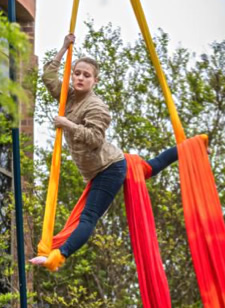
|
![]()
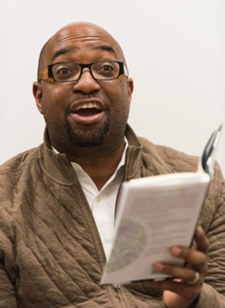
|
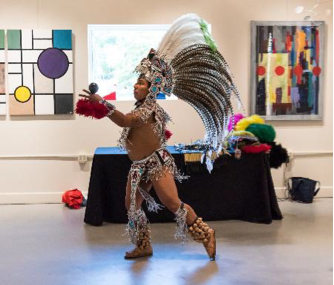
|
– from a final report by Arts Herndon, an NEA Big Read grant recipient in FY 2015-16.
Bless Me, Ultima Sparks Discussion of Banned Books in Redlands, California
“The most successful lecture was the one that addressed the banning of Bless Me, Ultima. The discussion was facilitated by University of Redlands’ faculty member Dr. Priya Jha (Department of English). A number of members of the audience commented that they had come because Bless Me, Ultima seemed such an unlikely book to be banned. There was a lively discussion amongst the diverse audience, which comprised retirees, high school students interested in book banning, individuals who loved the book, those just interested in any discussion of books and a woman who had grown up in a very similar community in New Mexico to that in which the book is set.”
“Feedback from the community was very positive. The responses were as varied as the participants. I found it great that people of different gender, race, and economic background could all find relatable themes in this great book. One comment I heard a number of times was surprise that they hadn’t heard of the book before. Many people were also shocked that Bless Me, Ultima is a commonly banned book at schools. One of our book discussions actually focused on this very subject. Equally, many parents commented that they had heard of the book when their students read it in school and always wanted to read it for themselves. They were thrilled that they could take a copy away with them. For some, the ability to have the book and other materials in both Spanish and English allowed the whole family to read the same book which had never happened for some members of our community.”
- from a report by the University of Redlands, an NEA Big Read grant recipient in FY 2013-2014.
Bless Me, Ultima Promotes Literacy in Fresno, California
“A highlight of this year’s Big Read was hosting four Diá de los Niños events at rural branches where the population is over 80% Hispanic. These events featured Latino music, dance, arts and crafts, games and bilingual storytelling featuring Rudolfo Anaya’s children’s books. Children were allowed to choose a bilingual book to take home with them to encourage reading and English usage and also to encourage parents to participate in reading with their families. The largest of these Diá de los Niños events was held in downtown Fresno in partnership with Arte Américas Cultural Arts and Entertainment Center (Casa de Cultura) and was such a success that we have decided to make it an annual event. Not only were we able to attract new audiences for the museum and customers for the library but were able to create awareness for the Library’s summer reading program designed to help children retain and improve their reading skills over the summer vacation.”
“FCPL’s goal was to really reach out to our Hispanic communities, particularly in the small towns within the county that are comprised mainly of migrant farm workers. Literacy rates are generally low and English is a second language in these smaller towns, and a goal was to try to draw the migrant families into our library spaces. Hosting numerous Diá de los Niños events that were promoted and covered by our Spanish Language media partners helped raise awareness and encouraged people to attend these events. The events were staffed by FCPL’s own Spanish speaking staff and volunteers, and featured performances by entertainers in Spanish. By capitalizing on something the Hispanic population recognizes such as a Diá de los Niños event (a major celebration in Mexico) and highlighting a work by a Hispanic author, we were able to help reach our goal of promoting literacy no matter what the language barriers might be.”
– from a report by the Fresno County Public Library, an NEA Big Read grant recipient in FY 2012-2013.


